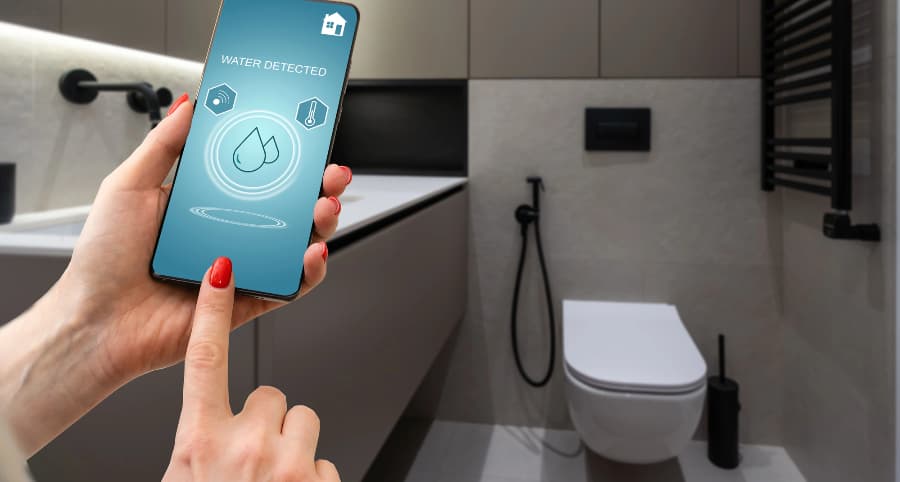How does a water sensor work and why connect one to your San Francisco smart home?

One small leak at your house can lead to significant problems and thousands of dollars in damage. You must protect against this risk; fortunately, there’s a simple way to accomplish this. A water sensor is an effective, simple, and affordable solution. Learn how they work and why you should incorporate water sensors into your San Francisco smart home.
How water sensors protect San Francisco your home
Water infiltrates homes in many ways, whether from a storm-related event, plumbing failure, appliance snafu, or simple human error. However it happens, you have to know at once, and this is where water sensors come in. But how do they really work?
The majority of water sensors are conductive and function with corresponding electrodes. When water invades the space between the electrodes, an electrical circuit is created, setting off your alarm. You’ll also discover capacitive sensors that emit an electrical field. Your alarm activates when water contacts the conductive surfaces of these sensors and interrupts the field. Optical sensors using infrared LED light are an additional option.
Get more protection from water sensors
Certain advanced water sensors offer even more protection as they use incorporated temperature sensors. This is an outstanding benefit in preventing pipe freezing. If there’s an extreme decrease in temperature, you’ll know right away. Taking measures before pipes break will save you from flooding and exorbitant repair costs.
Why connect water sensors to your San Francisco smart home?
When water issues happen, you have to be notified at once. You can attain this aim by integrating water sensors into your smart home. Whether you’re there to hear the alarm or not, you’ll be sent an immediate notification on your cell phone. As an added benefit, your 24/7 monitoring agents will be alerted. Each moment matters in a water emergency to control the damage and disruption to your family.
Where should you place water sensors?
Any spot prone to water infiltration is an ideal position for water sensors. Consider installing in these areas:
- Bathrooms: Place at the back of toilets or close to tubs.
- Basements: Water frequently infiltrates lower levels via damaged walls or as a result of excessive rain or malfunctioning sump pumps.
- Next to water heaters or appliances: Any water-using appliance could leak at some point.
- Below sinks: Water sensors are ideal for discovering plumbing leaks in areas hidden from view.
- Attics: Identify roof leaks early and prevent costly repairs.
Get water sensors with your Vivint smart home
Give your residence the complete protection it requires with Vivint’s innovative components. Our water sensors in San Francisco integrate with your Vivint cell phone app to deliver automatic updates when your alarm is triggered. You also enjoy incorporated temperature sensors to avoid pipe freezing. Learn more about the smart home tools available in San Francisco by dialing (415) 969-9484 today.
